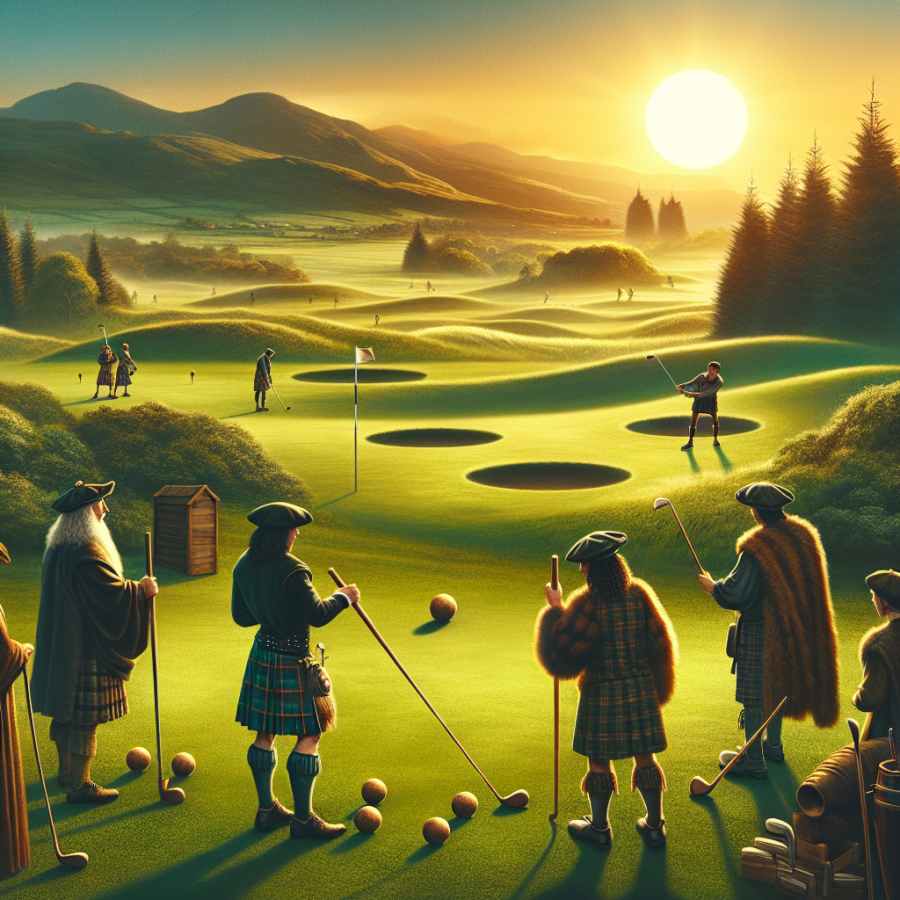Unraveling the Mysterious Birthplace of Golf
Golf is a beloved sport by millions around the globe. Yet, have you ever stopped to ponder its origins? You may have heard Scotland is the game's birthplace, which is only part of the story. The golf we know and enjoy today is indeed traced back to the Scottish, but its roots travel deeper, leading to a complex and fascinating exposition of cultural and sports history.
The game's origin can be traced back to the Roman game of 'paganica'. In this, players used a bent stick to hit a leather ball stuffed with feathers. These balls were relatively larger than the modern golf balls we see today and players aimed at a pre-defined target. The game was popular amongst the Romans and it's believed that this sport spread across Europe during the Roman Empire's expansion.
In the middle ages, a similar game to golf, known as 'cambuca' was introduced in England. It was a game played with a curved stick, a hallmark for many ancient stick-and-ball games and a key component in golf's evolutionary path. Around the same time, in France, they played 'jeu de mail', a game that involved a mallet and a wooden ball. As with cambuca, the appeal of jeu de mail was widespread, leading to its diffusion into Scotland, where it evolved into the earliest version of golf known as 'chambot'.
The Scots' incarnation of golf in the 15th century didn't vary significantly from chambot. It involved a pebble and a bent stick and emphasized getting the ball into a target area with as few strokes as possible. This simple yet challenging game quickly gained popularity. Despite facing a temporary ban by King James II, who feared that it was distracting troops from archery practice, the game weathered the royal decree.
It wasn't until the 19th century that golf began to resemble the sport we're familiar with today. The transformation was driven by the Scots once again, who pioneered the 18-hole golf course. The first documented evidence of this was in 1764 at St. Andrews, which reduced its course from 22 holes to 18. This became a turning point in golf's development and ensured Scotland's prominence in the sport’s history.
Although the modern golf we know and love started in Scotland, the game was influenced by many similar sports from different cultures.
Read also:
The Thrill of the Feast: Inside the World of Competitive Eating
The Evolution of Golf: From Early Beginnings to Modern Sport
The game of golf, known for its serene course settings and calming effect on players, is one of the most popular sports in the world today. However, the version we know and love has dramatically evolved from its initial formation. This expansive journey takes us from the basic ball-and-stick games of the medieval era to the modern globally-recognized sport.
The origins of golf are believed to be rooted in the ancient ball and stick game played in the Roman Empire. Scholars assert that this game was introduced to Scotland by the Romans, where it slowly transformed into the golf we recognize today. However, the first recorded instance of golf was in 1457 when the Scottish Parliament, led by King James II, banned the sport because it led to distractions from military training.
In the 1500s, Scotland became connected to the outside world through burgeoning trade networks. This broadened interaction led to a rise in the popularity of golf as the sport began to spread beyond Scotland's borders. In fact, Mary Queen of Scots was noted for her love of the game, and her endorsement boosted its standing among the elite.
Despite these early beginnings, golf was not yet the game we recognize today. The balls used were made of leather stuffed with feathers, and the clubs were crudely fashioned sticks. Golf courses had varying numbers of holes, and rules differed from place to place.
During the 1800s, golf began to undergo significant changes that shaped it into its modern form. The gutta-percha ball was invented in 1848, replacing the featheries, and was a game changer as it was cheaper, more resilient, and better suited to withstand the Scottish weather. Then, in 1860, the first Open Championship was held in Scotland, solidifying golf's status as a competitive sport.
The introduction of standardized rules was a pivotal moment in the evolution of golf. In 1952, the Royal and Ancient Golf Club of St. Andrews and the United States Golf Association came together to develop a single set of rules. This established a uniform playing field and solidified golf as a legitimate, internationally recognized sport.
The rapid technological advancements in the late 20th century revolutionized golf equipment. Wooden clubs were replaced with metal ones, and golf balls became more durable and efficient. Moreover, the advent of televised sports in this era played a crucial role in popularizing golf worldwide, making it more accessible than ever.
The game continued to evolve in the 21st century, reflecting societal changes.




